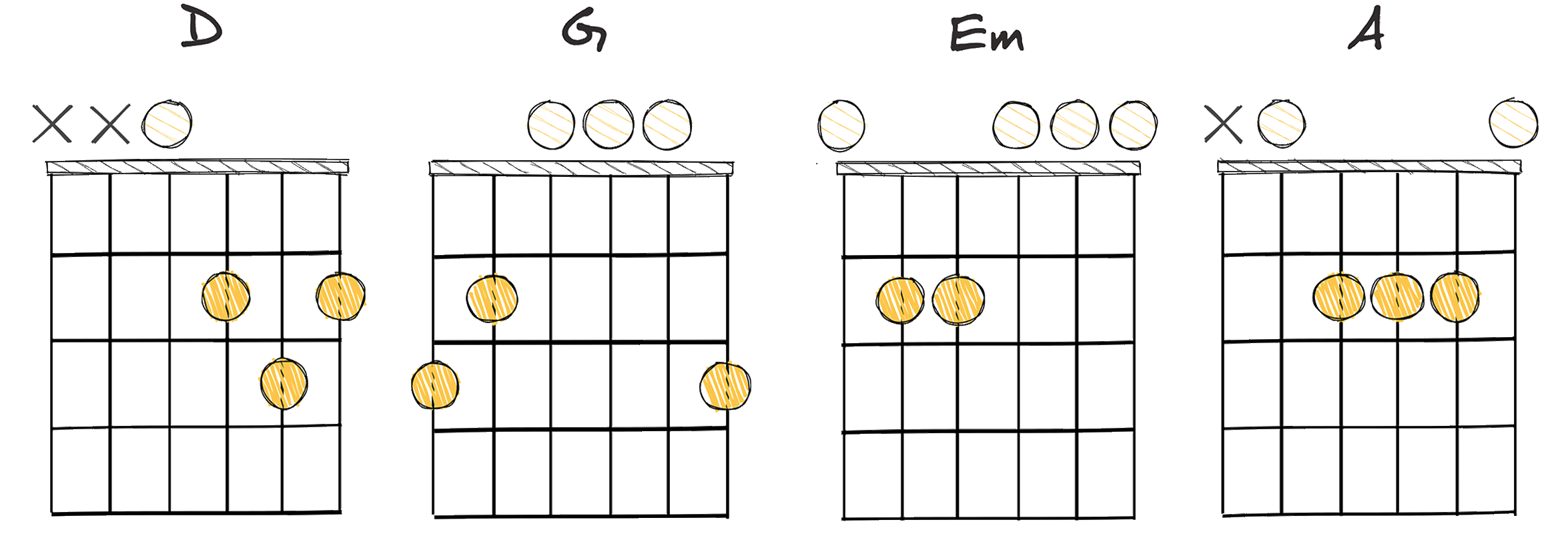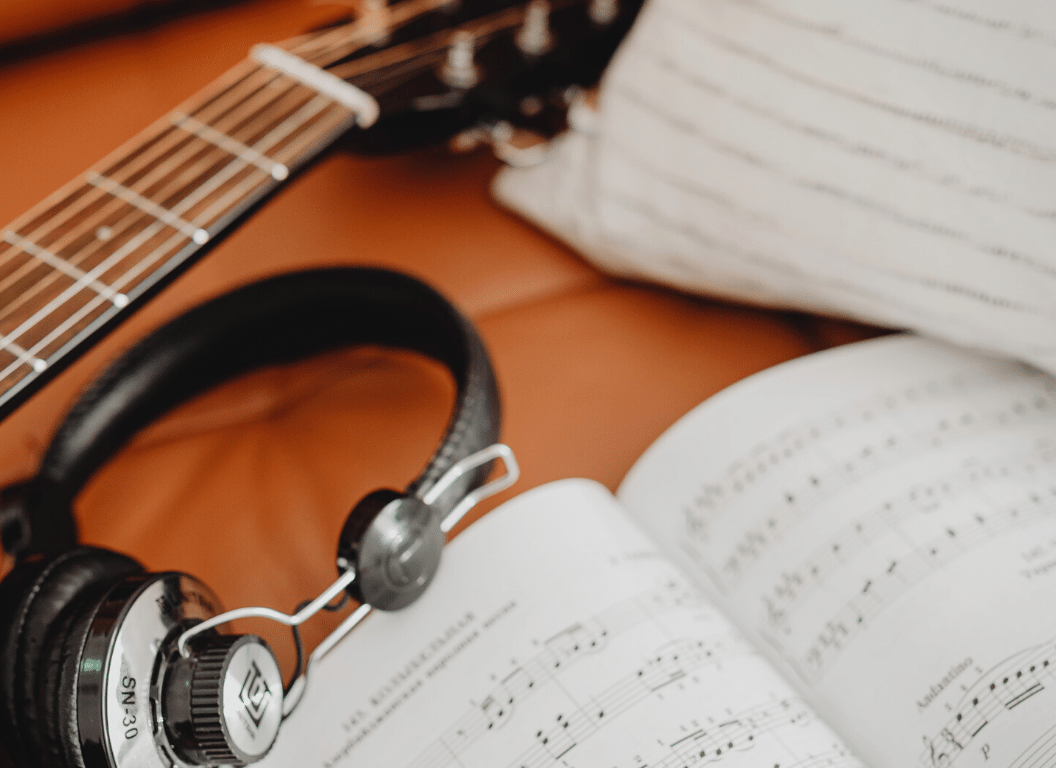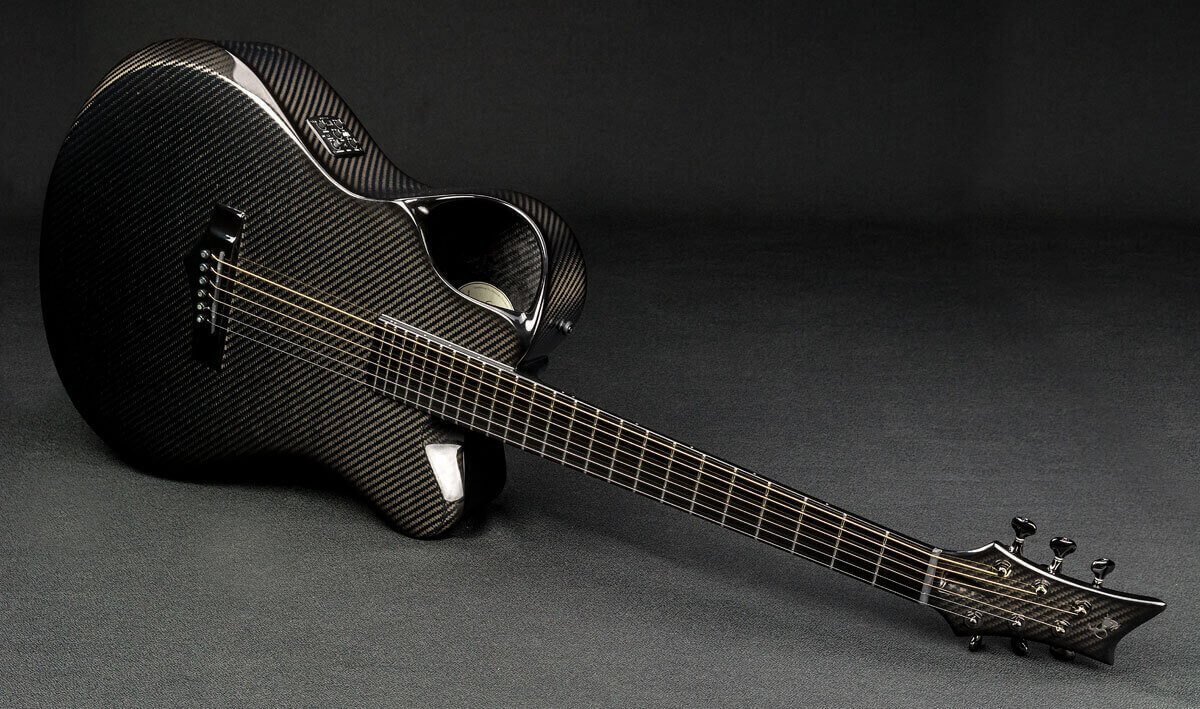For many aspiring musicians, exploring the world of music often begins with a question— can one truly master an instrument without having a firm grasp of musical notation?
This question is especially relevant when considering one of the most popular instruments worldwide: the guitar.
Both aspiring guitarists and seasoned players alike grapple with this inquiry.
Furthermore, the debate is fuelled by the existence of successful guitarists who openly affirm their inability to read sheet music.
Exploring this idea necessitates a deep dive into the practices and techniques existing within this realm.
This analysis also requires a considered understanding of the distinction between playing, interpreting, and composing music.
Table of Contents
- Is It Possible To Play Guitar Without Knowing How To Read Music?
- Common Misconceptions About Reading Music for Guitar
- How to Play Guitar Without Reading Music?
- Famous Guitarists who Climbed to Fame without Reading Music
- Is ‘Tablature’ An Alternative to Reading Music for Guitarists?
- What Does it Mean to Play Guitar By Ear?
- Pros and Cons: Involving vs. Excluding Musical Notation
- Balancing Music Reading with Playing Techniques
- Can You Compose Music Without Reading Sheet?
- Should You First Learn To Read Music or Focus on Playing?
- The Bottom Line
Is It Possible To Play Guitar Without Knowing How To Read Music?
Yes, it is indeed possible to play guitar without knowing how to read music. Many successful guitarists have learned to play by ear or by using tablature, a form of musical notation that indicates finger placement rather than musical pitches. However, while it is not necessary to read music to play guitar, gaining the skill can enhance your understanding and interpretation of music.
Continuing on this tangent, it’s essential to explore the benefits and drawbacks of both approaches — learning to read music and playing guitar by ear or using tablature.
Interestingly, you will uncover how these methods are not mutually exclusive, but can, in fact, complement each other.
This deep dive will also illuminate the importance of understanding the underlying music theory concepts involved in playing the guitar, irrespective of the learning method chosen.
Both novice guitarists and experienced musicians may find these insights valuable in their musical journey.
Common Misconceptions About Reading Music for Guitar
When it comes to musical notation and guitar playing, there are many myths and misconceptions that often hinder aspiring guitarists.
One common belief is that learning to read music is a prerequisite to playing the guitar efficiently.
However, this notion is one of the biggest misconceptions in the music industry.
The Myth of Necessity
People often tend to believe that reading sheet music is an obligatory skill every guitarist must possess.
This belief overshadows the fact that many successful guitarists have achieved remarkable successes without this skill.
The notion that reading music is an essential requirement for playing guitar is often an undue burden on the shoulders of aspiring guitarists.
Supporting this statement are countless successful musicians who did not rely on reading sheet music to express their musical prowess.
Moreover, many guitarists have set exemplary milestones in their careers, without having to read a single note.
Myth vs. Reality
While reading music indeed serves as a valuable tool, especially for classical guitarists and session musicians, it is not a must for all types of guitar playing.
Genres like rock, blues, and pop have been dominated by guitarists who are versed in other forms of notation or prefer playing by ear.
By viewing the content provided, you will gain in-depth understanding into why reading music isn’t a prerequisite for playing guitar.
You’ll also explore various facets of guitar playing that are often overshadowed by this common misconception.
Genres like rock, blues, and pop have been dominated by guitarists who are versed in other forms of notation or prefer playing by ear.
While some may argue that learning to read music can add additional color to one’s musical palette, asserting it as a strict mandate often stunts the growth and limits the potential of many budding guitarists.
Therefore, rather than forcing oneself into the path of musical notation, one could focus on understanding the array of musical avenues available to guitarists.
How to Play Guitar Without Reading Music?
Many budding guitarists feel overwhelmed by the thought of learning to read music, viewing it as a complex language that poses an extra layer of difficulty on their musical journey.
However, it’s a myth that one must read music to play the guitar beautifully.
Countless successful guitarists have pursued their passion without ever learning to decipher sheet music, relying instead on tabs, chords, and the ability to play by ear.
Here’s a step-by-step guide on how to play guitar without reading music.
Start with Basic Chords
The cornerstone of many songs is the basic guitar chords, which can be learned through chord diagrams.
A chord diagram is a simple visual representation of where to place your fingers on the fretboard.
These diagrams are not sheet music, but rather a straightforward map that eliminates the necessity of reading music.
Once you understand the structure of chord diagrams (vertical lines representing the strings of the guitar, horizontal lines for the frets, and circles for where to place your fingers), you can start learning chords.
Begin with the common chords, such as A, C, D, E, G, along with minor chords like Am, Dm, and Em.
Countless successful guitarists have pursued their passion without ever learning to decipher sheet music, relying instead on tabs, chords, and the ability to play by ear.
In the context of this quote, it is important to note that while learning chords, it might be beneficial to practice changes between them, as it will aid in playing songs smoothly.
Even popular songs often consist of a few easy chord progressions, and recognizing these patterns can further simplify the learning process.
Explore Guitar Tabs
After mastering basic chords, the next step is to explore guitar tabs.
Guitar tabs or tablature are another form of music notation which are especially beneficial for those who don’t want to learn to read traditional sheet music.
Tabs are very visual and intuitive, providing information on where to place your fingers on the fretboard.
Different numbers on the horizontal lines represent the frets on which one needs to press down, making it easier to understand than sheet music.
Tabs can be used to play single note melodies, riffs, scales, and even chords,
A chord diagram is a simple visual representation of where to place your fingers on the fretboard.
Speaking to the reference above, tabs are also crucial in teaching finger placement and timing which are invaluable skills for any guitarist, regardless of whether or not they read sheet music.
In conclusion, it is evident that while reading sheet music may have its advantages, it is by no means a prerequisite for learning the guitar.
With the use of chord diagrams and guitar tabs, along with practice and perseverance, one can undoubtedly learn to play the guitar without being able to read music and still making wonderful, beautiful sounds.
Famous Guitarists who Climbed to Fame without Reading Music
Many believe that reading music is an absolute necessity for any professional guitarist.
However, facts show that some legendary guitarists climbed to the top without any proficiency in reading musical notation.
Let’s debunk this myth by discussing some of these iconic figures who managed to achieve greatness without music reading skills.
Eric Clapton
Considered one of the most influential guitarists of all time, Eric Clapton is self-confessedly unable to read music.
Despite this, he managed to reach the pinnacle of the music industry and inspired countless others.
“I do not read music.
I don’t write it.
So I wander around on the guitar until something presents itself.” – Eric Clapton
The quote above emphasizes Clapton’s exploratory approach to guitar playing, rooted not in the strict confines of musical notation but in an intuitive understanding of the instrument.
It illustrates how reading music, while beneficial, is not mandatory to create compelling and melodious music.
Jimi Hendrix
Jimi Hendrix, revered for his innovative and emotive guitar playing, was another maestro who didn’t read music.
Through his talent and creativity, he revolutionized music in a way few had done before.
“Music doesn’t lie.
If something needs to be changed in this world, then it can only happen through music.” – Jimi Hendrix
This quote illustrates Hendrix’s faith in the transformative power of music.
His ability to change the world of rock and roll music despite his inability to read music is a testament to his sheer skill and innate musicality.
Slash
Regarded as one of the greatest rock guitarists, Slash, from Guns N’ Roses, too confesses that he does not read music.
His iconic riffs and solos are the products of his creativity and comprehension of music rather than reading music.
“You can never learn everything on the guitar, or much less in music itself.” – Slash
This statement reinforces the notion that music is an endless journey where learning to read music is only one waystation.
It reminds us that the ultimate goal is to create and connect with music, with or without reading skills.
You’re invited to learn more through this impactful video.
It serves as a wonderful resource to broaden your understanding of basic music theory, which can be beneficial, but is not essential, as demonstrated by these legendary guitarists.
Is ‘Tablature’ An Alternative to Reading Music for Guitarists?
Guitar tabs, or simply tabulature, is an effective and popular method of notating guitar music.
This alternative system of music notation is specifically designed with the guitar in mind, rendering it convenient for fledgling guitarists uncomfortable with reading sheet music.
In essence, tablature visually represents the guitar’s fretboard, thereby allowing musicians to understand where to place their fingers to play certain notes or chords.
While the system does require a basic understanding of your guitar, it is generally straightforward and simple to learn, even without prior experience of reading music.
The first thing to grasp about tablature notation is that each horizontal line represents a string on the guitar.

The top line corresponds to the thinnest string (the high E), while the bottom line symbolizes the thickest string (the low E).
A number on a line denotes the fret where you pose your finger.
For example, a ‘0’ specifies that you play the string open, without fretting it, while a ‘3’ means you need to fret the string at the third fret.
A sequence of numbers implies the notes should be played in that specific order.
A sequence of numbers implies the notes should be played in that specific order.
This numbered sequence provides a clear, easy-to-follow guide for playing a melody or riff on the guitar.
Therefore, tabs can be a great tool for beginners to get started quickly on playing songs and understanding the layout of the fretboard.
Drawbacks and Limitations of Tablature
Although effective and user-friendly, tablature isn’t without its limitations.
One of the main criticisms against tabs is that they don’t convey the rhythm or duration of notes.
So, without an understanding of the original song or a track to play along with, a guitarist might find it challenging to figure out the timing merely from the tabs.
Thus, while sufficient for learning melodies and riffs, tabs may not provide a comprehensive understanding of a song’s musicality as standard sheet music would.
One of the main criticisms against tabs is that they don’t convey the rhythm or duration of notes.
Only through consistent practice with a song’s original track and a keen sense of rhythm can this issue be mediated.
In spite of these shortfalls, tabs have emerged as a popular choice for guitarists due to their easy-to-read and efficiently descriptive nature.
Mixing Sheet Music and Tabs
For those who wish to combine the convenience of tabs with the musical depth provided by standard sheet music, certain publications offer a fusion of both.
These hybrid scores present both the standard musical notation and the corresponding tabs.
This setup allows for the melody, rhythm, and chords all to be clearly displayed.
Hence, a guitarist can quickly learn how to play the piece by following the tabs, and at the same time gain insight into the song’s musical structure from the standard notation.
In conclusion, while tablature may not entirely replace traditional sheet music’s depth and complexity, its simplicity and practicality make it an appealing alternative, particularly for beginner guitarists.
What Does it Mean to Play Guitar By Ear?
The term playing by ear is often bandied about in the music scene, but it’s a concept that can leave new guitarists a little mystified.
In essence, it refers to the ability to hear a tune or melody and accurately reproduce it on your instrument without needing to reference written music.
While this might sound like a feat only the musically gifted can accomplish, that’s far from the truth.
In fact, playing by ear is a skill that can be cultured and refined with practice.
Playing by ear is a skill that can be cultured and refined with practice.
Sure, some people may have a natural flair for it, however, it’s not something you’re strictly born with or without.
Besides, breaking guitar playing down into its simplest form, it’s all about learning to recognize patterns whether those are chord progressions, scales, or melodies.
How to Develop the Skill
To get started, there are a few exercises you can put into practice.
Firstly, actively listen to the music.
Don’t just have it playing passively in the background – truly concentrate on it, paying attention to the melodies, chords and rhythm patterns.
Charting out the melody can also be a great help.
Using a simple notation system, write down the highs and lows of the melody as you hear them.
Another good way to harness this skill is by experimenting on your guitar.
Attempt to replicate sounds and tunes that you hear.
This could be anything, from a car horn to a bird tweeting.
Role of music theory
Some believe that a thorough understanding of music theory is necessary to play by ear.
However, that’s not always the case.
While music theory can certainly enhance one’s ability to play by ear, it isn’t a mandatory element.
Comprehending the why’s and how’s of what you’re hearing can indeed be beneficial, but you can also develop a solid ear for music through practice and active listening.
While music theory can certainly enhance one’s ability to play by ear, it isn’t a mandatory element.
There are many successful guitarists who have never delved into music theory, yet they’ve managed to develop an impressive ability to play by ear.
Therefore, while the theory can assist in forming a solid foundation, it’s perfectly possible to excel in playing by ear without it.
Benefits of Learning to Play by Ear
Learning to play by ear has numerous benefits that extend beyond simply being able to duplicate a tune you’ve heard before.
Aside from cultivating a deeper understanding and appreciation for music, it also allows for greater creativity and improvisation.
When you’re less dependent on sheet music, you gain the freedom to experiment, improvise and create your own unique sounds.
Lastly, but by no means least, it enables you to quickly pick up and join in any casual jam session, which can be extremely gratifying.
In addition to these tips, exploring the concepts presented in this online resource could also be highly beneficial.
You’ll be exposed to insightful, relevant, and easily digestible information about scales, which are a fundamental component of music theory – information that can very well add further depth to your playing by ear skills.
Pros and Cons: Involving vs. Excluding Musical Notation
Guitar playing is a vast world with multiple approaches and methodologies, two of which include playing with musical notation and playing without it.
Guitar Playing with Musical Notation
The traditional approach to learning guitar is from sheet music, where every note, rhythm, and dynamic is written out.
Firstly, one primary advantage of this approach is precision.
With everything laid out, a guitarist does not need to guess at what to play or how to play it.
This indicator facilitates a deep understanding of music theory, rhythm, and the structure of the piece.
Moreover, this approach allows for easier communication with other musicians and instruments.
With everything laid out, a guitarist does not need to guess at what to play or how to play it.
As a reflection, this method of guitar playing reduces errors and facilitates playing in a musical ensemble setting.
However, one disadvantage could be the necessity of strong literacy skills to navigate through a sheet of music.
Also, the method may hinder the creative process in some musicians as it’s less improvisational and experimental.
Guitar Playing without Musical Notation
On the flip side, playing guitar without reading music is a more intuitive approach.
It heavily relies on a player’s ear and musical intuition, inherent characteristics in every musician.
A significant advantage of this technique is the ability to improvise and experiment with the music freely.
Players can adapt to ever-changing musical environments effortlessly, making this method perfect for genres like rock and jazz.
Players can adapt to ever-changing musical environments effortlessly, making this method perfect for genres like rock and jazz.
The potential for creativity is vast with this method, and it encourages musicians to explore different musical possibilities.
Potential disadvantages of this approach include a lack of precision and difficulty in communicating musical ideas to other musicians.
However, despite these limitations, numerous guitarists have achieved great success without solely relying on traditional notation.
Which Is the Best Approach?
Deciding on the best method depends largely on the individual.
Each approach provides unique advantages and caters to different playing styles and genres.
The best way to maximize one’s potential is to balance both approaches in their learning journey.
This strategy results in a well-rounded musician capable of navigating through any musical environment.
The best way to maximize one’s potential is to balance both approaches in their learning journey.
The combination of these approaches equips the guitarist with a comprehensive set of skills, thus, heightening their musical prowess.
Ultimately, it’s a personal journey colored by individual preference and learning style.
Balancing Music Reading with Playing Techniques
Embarking on your guitar learning journey involves consciously striking a balance between reading music and developing playing techniques.
The process of learning is never a one size fits all approach, especially when it comes to learning an instrument like the guitar.
Some budding guitarists might find the traditional method of learning through sheet music more beneficial, while others may lean more towards learning by ear or through playing techniques.
The key to optimal learning, however, is to find a harmonious balance between the two.
The Importance of Music Reading
Learning to read sheet music aims at developing an understanding of the underlying theory behind the melodies that we hear and play.
With a good grasp of music theory, you’ll be able to interpret and make sense of the pieces you play, enabling you to play more expressively and with a greater appreciation.
More importantly, the ability to read music opens up a vast world of repertoire that you would otherwise not have access to.
When you can read music, you can take any piece of sheet music and have the skills and ability to embark on the journey of interpreting it to make it your own.
The key to optimal learning, however, is to find a harmonious balance between the two.
This sentence emphasizes the importance of finding the balance in your learning path between theory and practice.
Developing both skills will lead to a well-rounded understanding and performance of guitar music.
Developing Playing Techniques
While the reading of music forms the bedrock of your guitar education, learning playing techniques is equally crucial.
Playing techniques not only allow us to physically execute a piece of music, but they also play a significant role in molding our personal playing style and tone.
Techniques such as strumming patterns, finger picking, bends, and slurs are all elements that add flavor to our music.
Mastering these can be a way to express our individuality through the music we play, which is something that reading music alone cannot deliver.
Mastering these can be a way to express our individuality through the music we play, which is something that reading music alone cannot deliver.
Here the emphasis is on the strength of technique and its role in personalizing our guitar playing music, allowing us to express our personality and individuality.
This personal expression is a key part of making music a meaningful experience, not just for the guitarist, but also for the audience.
Watching the provided video will give you more insights about key aspects to consider as an older beginner learning guitar.
It will also debunk some common misconceptions that might have previously held you back from starting your guitar learning journey.
Can You Compose Music Without Reading Sheet?
The art of composing music largely depends on individual creativity, skill, and knowledge, and less so on the ability to read sheet music.
Many successful musicians, especially guitarists, have proven that composing music doesn’t necessarily require reading sheet.
Not being able to read music didn’t hold them back, offering profound evidence that musical notation isn’t mandatory for creating tunes.
The Role of Creativity and Passion
Creativity and passion, alongside a feeling for rhythm and melody, can become your main tools for composing music.
Understanding how scales, chords, and rhythm patterns work can give you a strong foundation to build on.
Many successful guitarists have leaned on these aspects rather than relying on the ability to read music.
They focus on how the scales and chords sound, how they interact, and how they can use them to create the melody and the emotion they want to communicate.
Indeed, creating music is about conveying emotions, telling a story, or expressing personal experiences.
Thus, the ability to read music is not as crucial as having the passion, creativity, and understanding of harmony and rhythm.
The quote above sums up the importance of creativity and passion over reading music when composing.
The emotion, the story, and the harmony of the piece are what truly make a melody memorable.
While the ability to read music won’t hinder your composing skills, it is not an irreplaceable prerequisite.
Musical Aptitude and Aural Skills
Additionally, musical aptitude can also aid significantly in composing music without the ability to read sheet music.
Many successful guitarists possess a musical ear that allows them to identify tune intervals, chord progressions, and rhythm patterns, which are essential skills not necessarily dependent on reading music.
These aural skills, coupled with the ability to play an instrument, are highly valued.
Developing musical aptitude can be achieved through regular practice, as it boosts the ability to understand and reproduce melodies by ear, independent from the obligatory reading of sheet music.
This quotation emphasizes how consistent practice can enhance musical aptitude and aural skills.
By identifying the sound structure, rhythm, and harmony, one can create beautiful melodies without reading music.
Therefore, while reading music can guide you on the notes’ accurate placement, you can also rely on these inherent abilities and practice to compose creatively and expressively.
The Role of Experience and Experimentation
Last but not least, experience and experimentation play a crucial role in how one composes music without sheet reading.
Successful guitarists don’t solely rely on musical theory and reading music.
They’ve gained experience by exploring sounds, harmonies, chord progressions, and actively experimenting on their instruments.
Music is about discovery, innovation, and breaking conventional boundaries; therefore, composing should be a free and creative process, not bound by the need to read music.
Experience and experimentation, derived from playing, listening, and immersing oneself in music, can foster genuine composition skills, overpassing the boundaries set through reading music.
The focus here is on how guitarists learn to compose music by being adventurous with their instrument and experimenting with sounds and harmonies.
Finding what sounds good and expressing their creativity through trial and error is a valuable aspect of composing music without reading sheet.
Thus, musicians can thrive and create memorable pieces by fusing their creativity, passion, musical aptitude, and adventurous spirit, even in the absence of music reading skills.
Should You First Learn To Read Music or Focus on Playing?
As a budding guitarist, you are likely faced with the decision of whether to learn to read music or focus on playing techniques first.
This is a personal choice and depends on various factors like your musical goals, experiences, and style.
Understanding musical notation is useful, though not compulsory for guitar playing.
The ability to read music introduces you to a universe of written pieces and allows you to communicate musically with other instrumentalists.
Furthermore, learning to read music provides a better understanding of musical theory.
This knowledge might help you write your compositions and improvise efficiently.
A thorough comprehension of music notation contributes to your flexibility as a musician.
Being literate in music notation enables you to step in and play a piece with almost any band or orchestra, even without prior practice.
Such adaptability is beneficial for professional aspirations, particularly session work.
However, without efficient playing techniques, reading ability is fruitless.
Technique is the backbone of your skills as a guitarist because it forms the basis of your sound.
Consequently, even if you can read music thoroughly, without correct techniques and practice, the execution would be inefficient.
Indeed, many of the best guitarists in the world have got by without reading a note; their success is solid proof of the importance of techniques.
Nevertheless, it’s crucial to remember that reading music and playing techniques don’t have to be mutually exclusive.
Take the time to watch this fantastic video which discusses the balance between musical theory and technique for guitar playing.
It can offer insights into how to merge these two critical areas effectively.
Focusing on both these areas enables you to tap into the depth and breadth of guitar-playing possibilities.
Access to wide-ranging sheet music through reading prowess, combined with perfected playing techniques, paves the way for a comprehensive music journey.
Guitar mastery is a fusion of knowing what to play and how to play – the sweet spot where sheet music and techniques intersect.
The Bottom Line
Understanding the ins and outs of reading music for guitar playing, it becomes clear that while this skill can be extremely beneficial, it is not a prerequisite for being successful in the field.
Many acclaimed guitarists have reached the pinnacle of their careers without ever learning how to read musical notation.
Furthermore, tools like tablature or relying on one’s auditory abilities present other possibilities for learning and playing.
While this process can function independent of music reading, it doesn’t fully replace the depth of understanding and flexibility that it provides.
Ultimately, the priority between learning playing techniques and music reading should be determined by the individual’s goals and musical style preferences.
It’s all about finding a balance that caters to one’s personal musical journey, whether it includes music reading or not.
In love with guitars, and gear; expert in all things music! Been writing about guitars for about 5 years and counting. Born in the ’90s. Alma Mater: University of Havana. Always curious, trying to understand the world. #TeamFender




